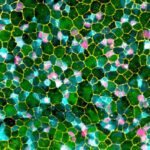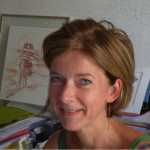Link to Pubmed [PMID] – 12889061
Dev. Dyn. 2003 Aug;227(4):524-35
Within the vertebrate embryonic neural plate, the first neuronal clusters often differentiate at the border of patterning identities. Whether the information inherent in the intersection of patterning identities alone controls all aspects of neuronal cluster development (location, identity, and size) is unknown. Here, we focus on the cluster of the medial longitudinal fascicle (nMLF) and posterior commissure (nPC), located at the forebrain/midbrain (fore/mid) boundary, to address this issue. We first identify expression of the transcription factor Six3 as a common and distinct molecular signature of nMLF and nPC neurons in zebrafish, and we use this marker to monitor mechanisms controlling the location and number of nMLF/nPC neurons. We demonstrate that six3 expression is induced at the fore/mid boundary in pax2.1/no-isthmus and smoothened/slow muscle omitted mutants, where identities adjacent to the six3 cluster are altered; however, in these mutants, the subpopulation of six3-positive cells located within the mispatterned territory is reduced. These results show that induction of the six3 cluster is triggered by the information derived from the intersection in patterning identities alone, whereas correct cluster size depends, in a modular manner, on the identities themselves. The size of the six3 cluster is also controlled independently of neural tube patterning: we demonstrate that the prechordal plate (PCP) is impaired in mixer/bonnie and clyde mutants and that this phenotype secondarily results in an increased production of six3-positive cells at the fore/mid boundary, without correlatively affecting patterning in this area. Thus, a signaling process originating from the PCP distinguishes between neural patterning and the control of six3 cluster size at the fore/mid junction in vivo. Together, our results suggest that a combination of patterning-related and -unrelated mechanisms specifically controls the size of individual early neuronal clusters within the anterior neural plate.

